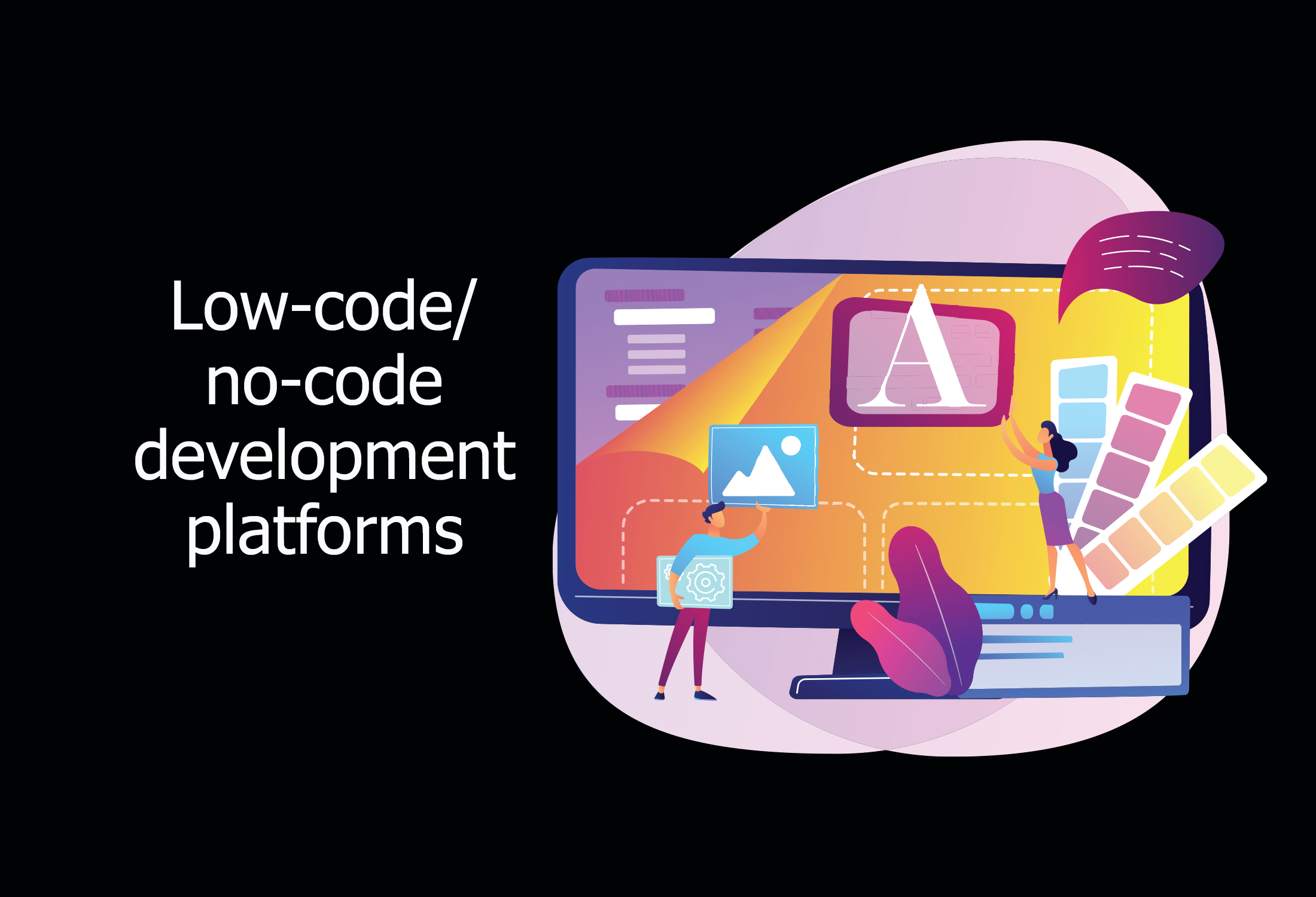Understanding Low-Code/No-Code Platforms
By Sagitec Solutions on Tue, Feb 23, 2021

Close your eyes and imagine… just kidding! Don’t close your eyes. You need them to read this blog. With your eyes open, imagine working for an organization that has zero IT backlog. As soon you request IT or identify requirements, the IT organization fulfills them without painful processes requiring extra time, extra resources, and additional budget. Also, imagine the applications and technology IT is delivering are flawless. Everyone in the organization works together in a collaborative utopia where end users have a big hand in fulfilling their own IT needs, quickly completing processes, scaling automatically for great performance whenever needed, and the business can just focus on, well, the business.
While IT may never achieve this exact utopia, organizations adopting low-code application development platforms are one step closer. That’s because low-code development platforms save a lot of time, money, and headaches in managing your enterprise application portfolio.
A low-code/no-code development platform provides a development environment to create application software through graphical user interfaces with little to no traditional coding. Low-code platforms typically feature drag and drop and other visual tools to develop applications. Also, low-code platforms typically incorporate built-in enterprise architecture like rules management, security, communications, and job scheduling—all things that most application developers need to use, but don’t need to be concerned with developing.
This means: More people, including non-IT resources, can be more deeply involved in creating and evolving software applications at your organization.
More and more organizations are beginning to use citizen developers to meet some of their IT needs.
Gartner describes a citizen developer as “… a user who creates new business applications for consumption by others using development and runtime environments sanctioned by corporate IT…”. Further, Gartner states, “In today’s world of SaaS, cloud and low-code and “no-code” tools, everyone can be a developer… therefore, application leaders must involve citizen development as part of their future of apps strategy.” According to a recent Gartner report, 61% of organizations either have or plan to have active citizen development initiatives.
While you may not be ready to completely embrace citizen developers in your organization, a low-code platform provides the opportunity for more traditional development work to be completed by less technical staff members such as business analysis, subject matter experts, and end-users. This reduces the work burden from your more technical resources and helps to better ensure that business needs are met.
Highly technical application developers are not going away. But, in tomorrow’s world, it’s more important than ever that you have tools that can empower everyone to be a developer. Our analysis shows that a low-code platform can reduce dependency on technical skills by 40%.
Your organization can build high-quality software applications quickly, to meet business needs when the business demands them.
One of the main reasons organizations are adopting low-code platforms is how quickly high-quality applications can be delivered. Low-code applications are easy to use and most heavily emphasize the developer/citizen developer experience.
Also, low-code applications encourage highly reusable, standard functionality and attempt to automate a lot of work that traditional coding requires. Low-code development dramatically reduces the complexity of software development—and complexity takes time.
Finally, low-code takes the complexity out of building applications even for technical resources. The days of developing a simple CRUD application are gone. Now, even a simple business application must interface and integrate with a multitude of applications. Once considered peripheral activities, traditional application developers are now overwhelmed by all these needs. This has significantly increased the design density of even simple business applications and requires significant talented manpower when using traditional application development. Low-code helps bridge the gap and allows organizations to focus on the business—the platform takes care of the rest.
According to Gartner, organizations using low-code development platforms have reduced development time by up to 82% and have increased IT’s business responsiveness by 51%. It will still take time to develop some applications, but far less time than today. Our analysis shows that a low-code platform can reduce IT backlog for new and enhancement applications by 20%.
You can drive application development and other IT costs down without sacrificing!
The biggest reason to reduce heavy reliance on technical skills and build high-quality software quickly is to save money. Traditionally, organizations have spent an absorbent amount of money to support IT needs. But, if you can do something faster and with fewer skills resources, you can reduce your IT spend or spend smarter, all without sacrificing what the business needs.
The cost of a low-code platform, typically offered as a SaaS with monthly or annual subscriptions, is substantially lower than the monthly salary of a single software developer. A survey by Forrester Research finds that 70% of organizations believe low-code platforms are more affordable than traditional software development. That doesn’t even quantify the cost ROI of the software developed and the ability to better meet your organization’s needs.
Working in a low-code development platform is more like putting together a puzzle than writing in another language. Just like puzzles, the software can be simple or complicated. But, putting together a puzzle is a different way of thinking than writing in another language.
Sagitec’s low-code/no-code development platform, now called Xelence, has helped clients build customizable solutions since 2004. Xelence helps organizations focus on reaping low-code benefits for enterprise-grade applications. Since its inception, our platform has had a singular focus: making development as easy and high-quality as possible so that our implementations are efficient, effective, and meet our clients’ needs.
Are you ready to reimagine your organization with a low-code/no-code development platform? Click below to know more.
You May Also Like
These Related Stories

Collaboration Made Easy: Enhancing Communication and Professional Development with Low-Code/No-Code Solutions

Empowering Professional Developers: How Low-code/no-code Can Help




No Comments Yet
Let us know what you think